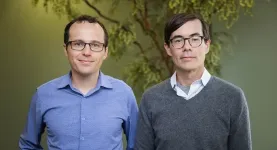(Press-News.org)
The development of human societies is concurrent with infrastructural changes, evidenced by rapid urbanization in recent years. We are moving towards the era of 'smart cities' powered by advanced technology—such as artificial intelligence (AI), the Internet of Things, and big data analytics—for sustainable urban development. However, climate change has been hampering this growth—earthquakes and other natural hazards negatively impact buildings and other structures in their wake.
Soil liquefaction is an example of a natural hazard where saturated soil substantially loses strength and stiffness in response to stress, typically due to earthquake-related shaking or other rapid loading. This process causes the soil to behave like a liquid, reducing its ability to support infrastructure. Overcoming challenges such as soil liquefaction is, thus, the need of the hour.
Accordingly, researchers from the Shibaura Institute of Technology, Japan, developed a predictive model using AI capable of generating comprehensive soil liquefaction risk maps. The study was led by Professor Shinya Inazumi and involved Ms. Arisa Katsuumi and Ms. Yuxin Cong. Their findings were published on 17 July 2024 in the journal Smart Cities.
Regarding his motivation to pursue this research, Prof. Inazumi says, “We were motivated to pursue this research after we recognized the urgent need to improve urban resilience to earthquakes, especially in rapidly urbanizing areas prone to seismic activity—there are critical weaknesses in existing geotechnical risk assessments and urban planning strategies. Since traditional methods for predicting soil liquefaction are often limited by the scale of data integration and speed of analysis, resulting in gaps in emergency preparedness and risk management, we decided to leverage advanced technologies such as AI and machine learning to develop a more dynamic and accurate predictive model."
Indeed, Prof. Inazumi and his research group integrated advanced machine learning techniques with geotechnical and geographical data to develop this predictive model. They then successfully applied this model to enhance urban planning and infrastructure development in Yokohama, Japan—an area particularly vulnerable to soil liquefaction due to its extensive reclaimed lands and frequent seismic activity.
Notably, the developed model used a combination of machine learning model—such as artificial neural networks and gradient-boosting decision trees—to improve the accuracy in predicting soil liquefaction risk. The researchers achieved high accuracy in predicting soil classifications and N-values (crucial for evaluating soil liquefaction risk). They validated the effectiveness of the model against extensive geotechnical survey data.
Prof. Inazumi says, “The real-world application of our research is the development of hazard maps which can help urban planners and engineers to visualize and identify areas at high risk for soil liquefaction and make informed decisions regarding the development of infrastructures.” He adds, “Apart from bolstering emergency response planning, this AI-driven approach can also facilitate community engagement and education by providing clear and accessible information about at-risk areas.”
The study, thus, highlights transformative developments in geotechnical engineering involving AI integration into soil liquefaction risk prediction. This novel approach bolsters the efforts for urban resilience and corresponding sustainability.
***
Reference
DOI: 10.3390/smartcities7040071
About Shibaura Institute of Technology (SIT), Japan
Shibaura Institute of Technology (SIT) is a private university with campuses in Tokyo and Saitama. Since the establishment of its predecessor, Tokyo Higher School of Industry and Commerce, in 1927, it has maintained “learning through practice” as its philosophy in the education of engineers. SIT was the only private science and engineering university selected for the Top Global University Project sponsored by the Ministry of Education, Culture, Sports, Science and Technology and had received support from the ministry for 10 years starting from the 2014 academic year. Its motto, “Nurturing engineers who learn from society and contribute to society,” reflects its mission of fostering scientists and engineers who can contribute to the sustainable growth of the world by exposing their over 9,500 students to culturally diverse environments, where they learn to cope, collaborate, and relate with fellow students from around the world.
Website: https://www.shibaura-it.ac.jp/en/
About Professor Shinya Inazumi from SIT, Japan
Dr. Shinya Inazumi is a professor at the Department of Civil Engineering, College of Engineering, Shibaura Institute of Technology, Japan. He is a pioneering researcher in civil and geotechnical engineering, particularly in adaptive social infrastructure that can mitigate the effects of climate change. Accordingly, he has authored more than 250 research publications in national and international journals. Notably, he won the “ICE Publishing Awards 2020 (Environmental Geotechnics Prize)” from the Institution of Civil Engineers (ICE) in 2020 and the “MEXT Young Scientists’ Prize” from the Ministry of Education, Culture, Sports, Science and Technology (MEXT) in 2015.
Funding Information
This research received no external funding.
END
Over the past few decades, there has been remarkable progress in genetic manipulation technologies, bringing us closer to the point where genes can be modified in vivo. Such tools would open up the way to gene therapy, ushering in a new era in medicine. Thus far, the most promising strategies for gene therapy involve leveraging the existing molecular machinery found in viruses.
In particular, adeno-associated virus (AAV) vectors have recently garnered significant attention from the scientific community, given their potential to serve as nucleic acid vaccines ...
When developing new drugs, understanding their effects on ion channels in the body, such as the human ether-a-go-go-related gene (hERG) ion channel found in neurons and heart muscle cells, is critical. Blocking hERG channels can disrupt normal heart rhythm, potentially leading to a fatal condition known as torsade de pointes. Current methods for assessing these effects typically involve invasive procedures like patch-clamp techniques or fluorescence microscopy. These methods alter cell properties and may affect measurement accuracy, requiring specialized equipment ...
Much of the water in the West is transported across vast geographical areas by large infrastructure projects known as interbasin water transfers. Two of these projects in particular make up 85% of all energy-related greenhouse gas emissions associated with U.S. interbasin transfers — one in Arizona and the other in California — according to the new research published this week in the journal Nature Water.
The project in Arizona is known as the Central Arizona Project and in California it’s the State Water Project.
“You hear a lot about these big projects and how much energy they use,” said Avery Driscoll, a doctoral student in ...
Higher levels of urinary metals such as cadmium, tungsten, uranium, cobalt, copper and zinc are linked to increased cardiovascular disease and mortality in a racially and ethnically diverse U.S. population, according to a new study at Columbia University Mailman School of Public Health. While it is well documented that exposure to certain metals has been associated with cardiovascular disease (CVD) and mortality, until now the evidence was limited beyond arsenic, cadmium, and lead and for a racially diverse population. The findings are published in the journal Circulation.
When analyzed together, ...
Human-made climate change can lead to a destabilisation of large-scale components of the Earth system such as ice sheets or ocean circulation patterns, the so-called tipping elements. While these components will not tip over night, fundamental processes are put into motion unfolding over tens, hundreds or thousands of years. These changes are of such a serious nature that they should be avoided at all costs, the researchers argue. In their new study, they assessed the risks of destabilisation of at least one ...
For some forms of tuberculosis, the chances that an exposed person will get infected depend on whether the individual and the bacteria share a hometown, according to a new study comparing how different strains move through mixed populations in cosmopolitan cities.
Results of the research, led by Harvard Medical School scientists and published Aug. 1 in Nature Microbiology, provide the first hard evidence of long-standing observations that have led scientists to suspect that pathogen, place, and human host ...
LA JOLLA, CA—To diagnose heart conditions including heart attacks and heart rhythm disturbances, clinicians typically rely on 12-lead electrocardiograms (ECGs)—complex arrangements of electrodes and wires placed around the chest and limbs to detect the heart’s electrical activity. But these ECGs require specialized equipment and expertise, and not all clinics have the capability to perform them.
Now, a team of scientists and clinicians from Scripps Research has shown that heart conditions can be diagnosed roughly as accurately using just three electrodes and an artificial intelligence (AI) tool. In a ...
Current climate policies imply a high risk for tipping of critical Earth system elements, even if temperatures return to below 1.5°C of global warming after a period of overshoot. A new study indicates that these risks can be minimized if warming is swiftly reversed.
Human-made climate change can lead to a destabilization of large-scale components of the Earth system such as ice sheets, ocean circulation patterns, or global biosphere components, the so-called tipping elements. In their new study published in Nature Communications, researchers from IIASA and the Potsdam Institute for Climate Impact Research (PIK) analyzed the risks for four interconnected core climate tipping elements ...
Vaccines are safe and effective, and help reduce death and illness. But global vaccination rates are suboptimal and have trended downward, leaving humanity more vulnerable to vaccine-preventable diseases such as COVID-19, influenza, measles, polio, and HPV.
Identifying interventions that could increase vaccine coverage could help save lives. A new paper from a team led by researchers at the University of Pennsylvania offers the first comprehensive meta-analysis examining what types of vaccine intervention strategies have the ...
Osaka, Japan — An aging society has posed a new global problem, the risk of falling. It is estimated that 1 in 3 adults over the age of 65 falls each year and the resulting injuries are becoming more prevalent.
To tackle this growing issue, Associate Professor Hiromitsu Toyoda and Specially Appointed Professor Tadashi Okano from Osaka Metropolitan University’s Graduate School of Medicine, together with Professor Chisato Hayashi from the University of Hyogo, have developed a formula and assessment tool for estimating fall risks that is simple for older adults to use. The tool was developed using data collected from older adults over a ten-year period from April 2010 to December ...






